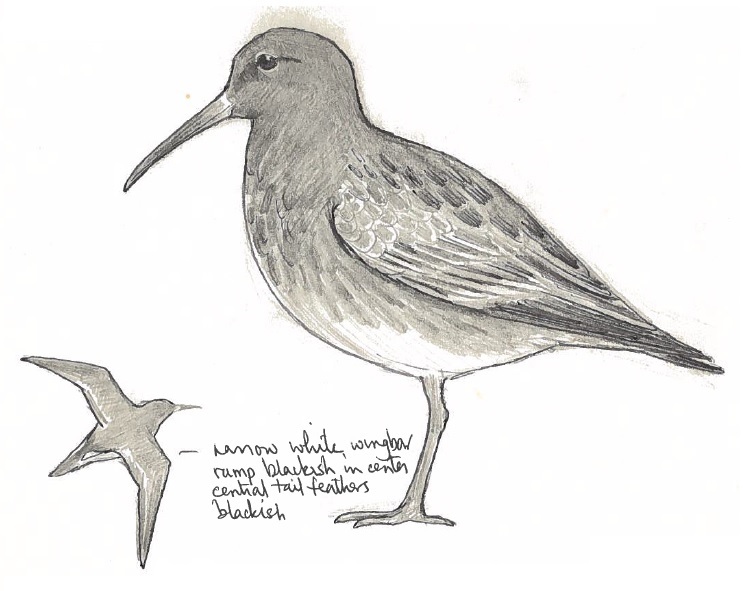
Photo by Donna L. Dittmann



Photo by Donna L. Dittmann
One (1984-02) in winter plumage collected (LSUMZ 113130) west of Holly Beach, Cameron Parish, on 12 January 1984 (Van Remsen; Bruce Crider, Larry McQueen, David Muth, Gary Rosenberg). The only previous record for Purple Sandpiper is also from Cameron Parish, at Calcasieu Pass on 4 April 1974.
One in basic plumage (1988-47; formerly 89-42) from 17 Dec 1988 (SACBC) -2 Apr 1989, Cameron: Cameron, East Jetty(1/2 mi. S Calcasieu Pass); Donna L. Dittmann (ph), Jim Stewart (Cardiff and Dittmann 1989, p. 599, 987); What was most likely the same individual was present on the east jetty at mouth Calcasieu Pass on 28 Feb 1989 (Stephan J. Schoech; erroneously reported as 28 Jan in AB 43(2):326), 30 Mar, 11 Apr 1989 (Janice Nicholls, Tom & Anne Marie Moorman), and 2 Apr. 1989 (Steve P. Gary, Charles Butterworth, Henry Miller; AB 43(3):493). Presumably all sightings pertained to the same individual. This is the third state record.
One in basic plumage (1988-46; formerly 89-39) on 18 Dec. 1988, Cameron: 2 mi. west of Holly Beach; Phillip Wallace, Cecil Kersting, Curtis A. Marantz, Curtis SorrelIs, Steven W. Cardiff (ph), Donna L. Dittmann, David. P. Muth, Kenneth V. Rosenberg, Gary H. Rosenberg, Peter E. Scott, Al & Gwen Smalley (ph), (AB 43(2):326). This record is the fourth for Louisiana.
One in non-breeding plumage (1990-053) on 3 February 1990, Cameron:
East Jetty, 2 mi. S Cameron; Donna L. Dittmann (field sketch) and Steven
W. Cardiff (3 x 5 card). This record was published in American Birds 44 (2): 281.

Field sketch by Donna L. Dittmann
One in basic plumage (1994-021) from 3-29 Apr. 1994, Jefferson: W. end of Grand Isle, jetty at Caminada Pass; Jim Holmes (ph), Joseph P. Kleiman, Dave Patton (ph), and Charles E. Lyon (drawing) (FN 48(3):308; LOS 159). This is the sixth state record.
One (2001-38) on 23 Dec 2001, Orleans: New Orleans, Lakefront Airport;
David P. Muth
and K.V. Rosenberg
(ph only); NAB56(2):185.

Photo by K.V. Rosenberg
One in basic plumage (2022-033) on 18 November 2022, Terrebonne: island adjacent to Houma Navigation Canal in Terrebonne Bay (currently referred to as HNC Island by Louisiana Dept. of Wildlife and Fisheries, N29.1943 o, ,S90.6165o; Robert C. Dobbs (field notes with sketch).
One (1997-14) on 26 April 1997, Jefferson: Grand Isle, Exxon fields. Most of the Members believed that the description did not eliminate similar-appearing shorebird species and, considering the habitat in which the bird was observed, Members did not believe description eliminated a Pectoral Sandpiper or Ruff.
One (2014-101) on 22 November 2014, St. Tammany: Slidell, Convention Center on Oak Harbor Blvd. The description was considered too vague for acceptance of such a rare shorebird observed only in flight by an observer with no prior experience with this species. Some superficially similar species were not considered in the write-up.